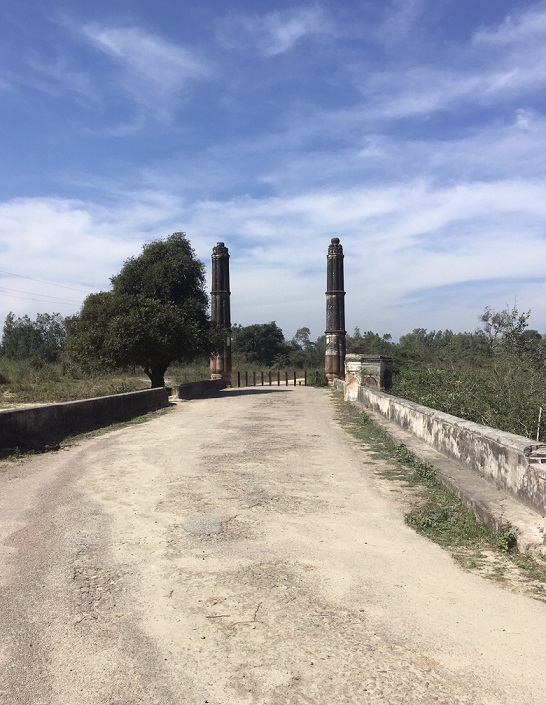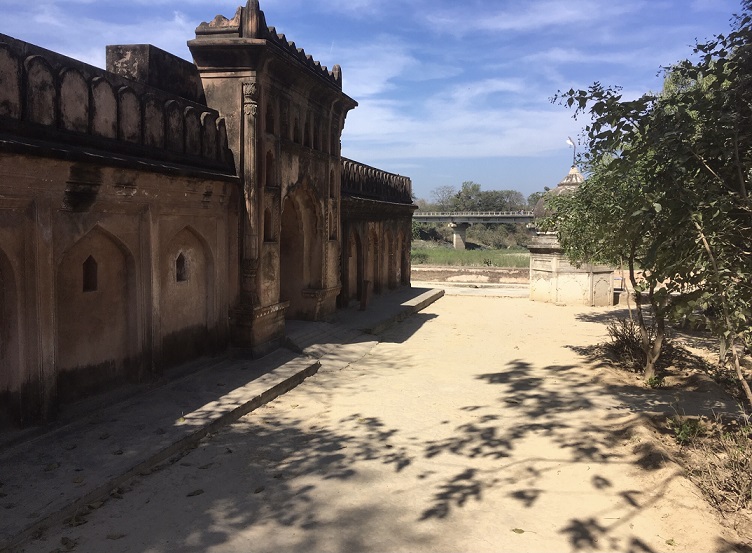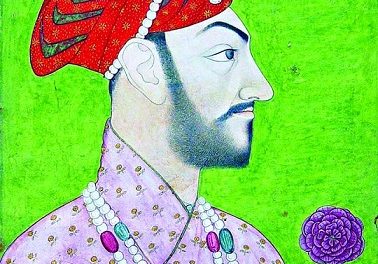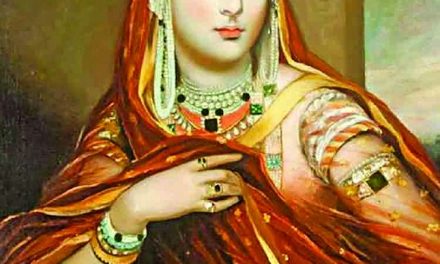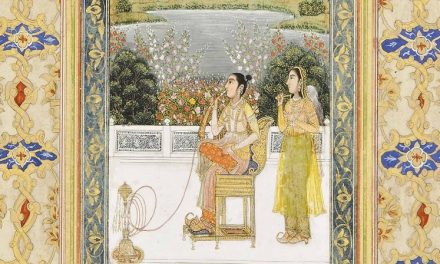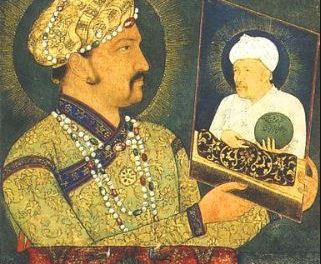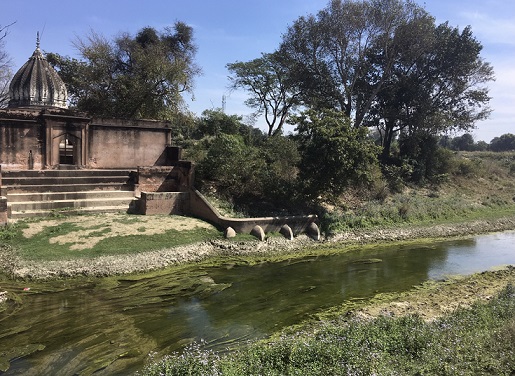
Lucknow, the capital city of Uttar Pradesh is famous for its 18th century monuments build by the Nawabs of Awadh. Explore the story of an 18th century hidden heritage located in one of its dusty village of Maliabad Tehsil build by Raja Tikait Rai, the finance minister of Asaf Ud Daula.
Tikaitganj, a small village is located nineteen kilometer west of Lucknow. A village with less two thousand human souls have Maliabad as its sub district headquarter (Tahsil) & Lucknow as a district headquarter. The village is located on the banks of the river Behta, a small tributary of the Gumti River. The British library online gallery quoted about this tributary in a detailed caption of late 19th century image of Gumti River “The Gumti enters the District from the north and after passing Lucknow city turns to the east and forms part of the boundary between Lucknow and Bara Banki. It is liable to sudden floods of great magnitude. Its chief tributary is the Behta, a small perennial stream rising- in Hardoi.” This is the description of a village that is even not mentioned on Wikipedia. Let’s explore an interesting 18th century historical heritage located in the village. The place got the name “Tikaitganj” after Raja Tikait Rai, the Diwan of Awadh during the reign of Nawab Asaf Ud Daula. From the time of Shuja Ud Daula, the Awadh Nawabs employed Hindus as high rank officers in military, finance & administrative units. Most of these selections were done on the basis of the merits & abilities. Tikait Raj was born to middle class family of Kayasth of Sakexna Dusre clan. He was employed as a clerk in his youth by a military officer, Hyder Beg Khan Nishapuri during the reign of Safdar Jung. Most of the members of Kayasth community form the core of accountancy during the days of the Mughals & some of them find avenues for high rank placements. “During the Nawabi many Kayasth rose to high position; No less than sixteen were honored with title of Raja, while many other bore almost equivalent titles, such as Kunwar & Muhsinul Mulk, Rai; Lucknow, A Gazetteer, Nevill HR, 1904”.
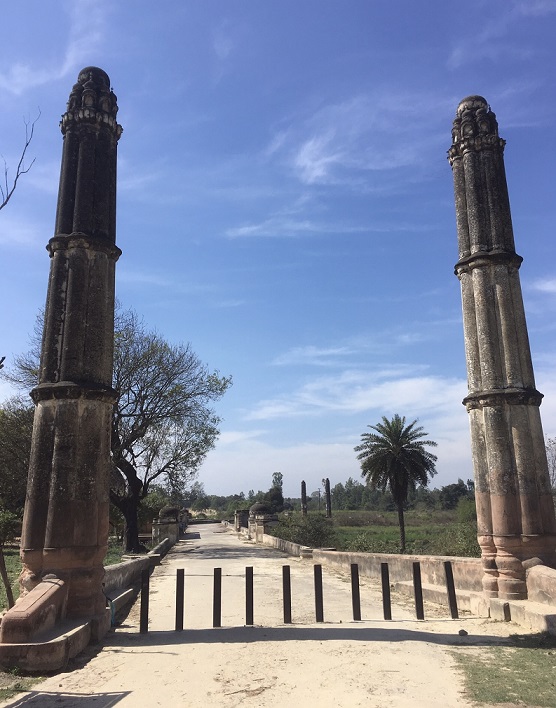
Later he got an appointment as the Diwan for the “superintendent of the armory” a post held by an influential eunuch army officer of Shuja Ud Daula’s military establishment. His growth curve was exponential, moving to the assistant of the revenue minister & finally after the death of the revenue minister in June 1792, he was chosen as his successor. He accompanied with Hasan Raza (one of the most powerful noble in the court of Awadh during Asaf Uddaula reign) as his assistant minister to Calcutta for discussing the reforms in Awadh administration & settling the debts of Nawab towards East India Company. In coming years, the debts over Asafud daula were largely increased & demands for the funds were not fulfilled by the Tikait Rai as a minister.
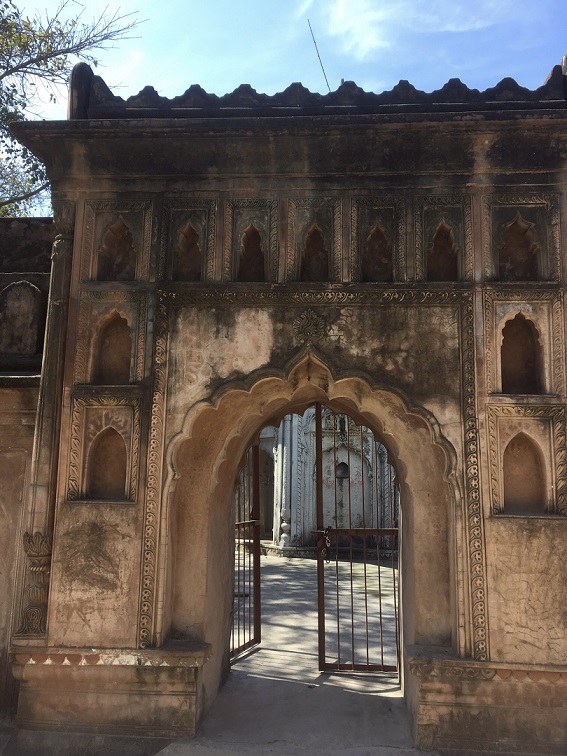
This created a rift between Nawab & Tikait Rai. At the same time Raja Jhao Lal who was also Kayasth & belonged to the same clan of Tikait Rai made Nawab convinced against him. The charges were made on him of financial fraud & siphoning funds for the personal assets. There was allegation that Tikait Rai was employing his close relatives in treasury & siphoned huge amounts by the help money lenders to the government. In this loop, he & his close relatives were making money by the gains of heavy interest rates. Even Jhao La was able to convinced Nawab to such an extent against finance minister that Tikait Rai builds palaces of gold bricks for himself by the money extracted from the state affairs. However with help of British resident Cherry, Hasan Raza & Raja Tikait Rai tried to reduce the influence their opponent Jhao Lal in the court of Asaf Uddaula. With Cherry’s efforts, they were reinstated in May 1796 with reduced powers but in backdrop of factional politics at Awadh court, the Jhao Lal was finally successful. Both Raja Tikait Rai & his senior Hasan Raza were dismissed by Nawab in June 1796.
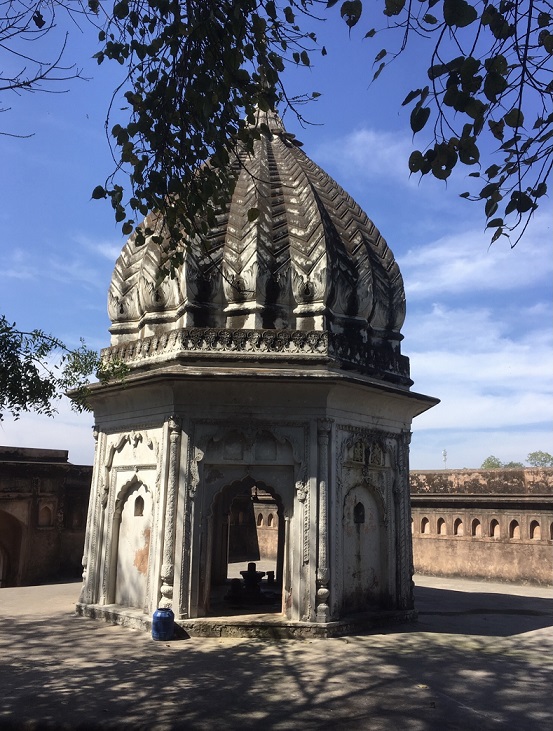
From his accession to the throne in 1775, he moved the capital to Lucknow from Faizabad. His mother & grandmother both the strong ladies acted like an independent sovereign centered at Faizabad. It was on the arbitration of British resident, they agreed to pay three million Indian Rupees to the ruler. Other than domestic challenge, he has to manage with East India Company. For gaining control, he replaced old aristocracy of his father who were also hostile towards him & controlled by his strong mother. Even Raja Tikait Rai replaced Surat Singh whose family held the office from last six decades. The reign of Asaf Uddaula was witnessed by the greatest splendor of Lucknow court that was never seen before. An Innumerable number of the monuments & gardens have been raised in new capital. His generosity & extravagance made the Awadh a blend of poverty & wealth with crushing taxation & debts. Contrary to his father Shuja Ud daula, he was least interested in military & civil affairs that were completely run by his deputies. This was the background of Awadh court in which Hasan Raza & his deputy Raja Tikait Rai were dismissed. Multiple perspectives have been presented regarding the conduct of Raja Tikait Rai. Some accused him regarding the frauds while the British residents who opposed Raja Jhao Lal faction gave him a clean chit. Some accounts cited that Raja Tikait Rai did great efforts in clearing the debts of East India Company but the extravagant expenses of Nawab on public treasury failed the attempts of Tikait Rai. Even after dismissal of Jhao Lal (1797) the Cherry was not able to reinstate Hasan Raza & Raja Tikait Rai as Nawab was adamant on this decision.
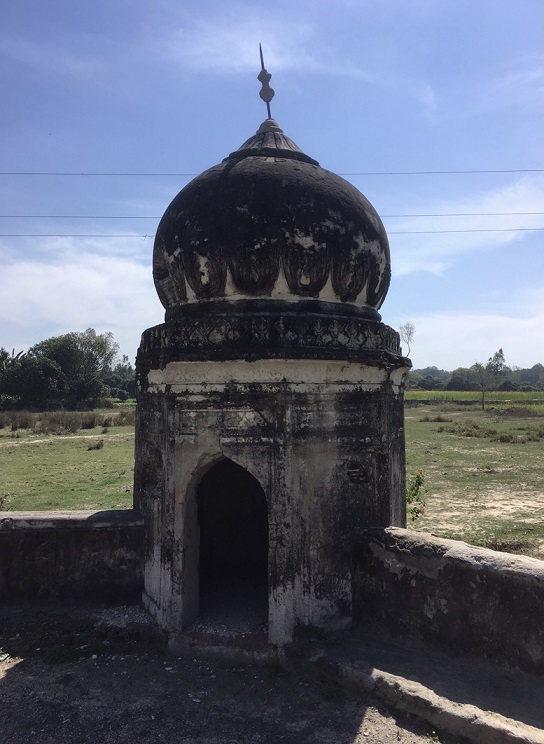
His four years of tenure left a remarkable legacy in the form of Bazars, monuments, localities & Bridges. In the span of four years, Raja Tikait Rai left behind a legacy in the shape of monuments, bridges & other structures that has been cited in various historical accounts.
The beautiful monuments standing by the side of Behta river in an unknown village is a living remnant of his monumental legacy. It was built in between 1792-96, the tenure of Raja Tikait Rai as a revenue minister of Awadh in Nawab Asafuddaula reign. Both temple & bridge were made up of small (Lakhori) bricks. The traditional lime mortar was used as cementing substance. The addition of surkhi (crushed red bricks), & edibles such as white lentils, tobacco juice, Jaggery further strengthen the cementing due to its adhesive actions. The main chamber of the temple was designed in an octagonal fashion with the roof covered by the grooved dome. The two opposite façades of octagon has an arched entrance for the temple. The entrance has been decorated by the niches, floral patterns & motifs. The walls of the other six facades are decorated by blind multilobed arches & niches. The temple is built on the raised plinth & surrounded by the walled enclosures. The entrance to the campus is by the gateway on the eastern end that is designed in a typical Indo-Saracenic fashion. Cusped arched gateway with floral borders & adorable niches on its surface are the reminiscence of its grandiose design. The bridge is one of the few sample remnants that have been preserved in its original form from the days of the 18th century Awadh. The structured is supported on the pillars & five pointed arches. The surface of the lime plastered structured is decorated by moldings. Two beautiful octagonal pillars (minarets) having three stories are located on the flanks of the terminal end of bridge. A white marble tablet is fixed on the first level of the minaret with an inscription in Persian language articulating the details of the monument. A series of the steps from the temple lead to the small ghat at the bank of Behta River. The mosque located within the village is made up of small bricks plastered with lime mortar build on the raised plinth. The compact size mosque has three main bulbous domes that form the roof of the main prayer hall. Instead of tall minarets on the flanks, there were two small cupolas over the kiosk of which one has been fallen with time. On the top of the walls, there were dome shape merlons over the ornamental turrets of which most of them have been fallen down. An elderly citizen from Maliabad shared an interesting narrative of oral history regarding construction of mosque. After completion of the Behta Bridge & Temple on its bank, the Nawab informed his minister that he wish to visit the place. So it was for the visit of Nawab Asaf Daula, the mosque was constructed in short span by Raja Tikait Rai. Still this compact medieval mosque in a village is named as Shahi Jama Masjid.
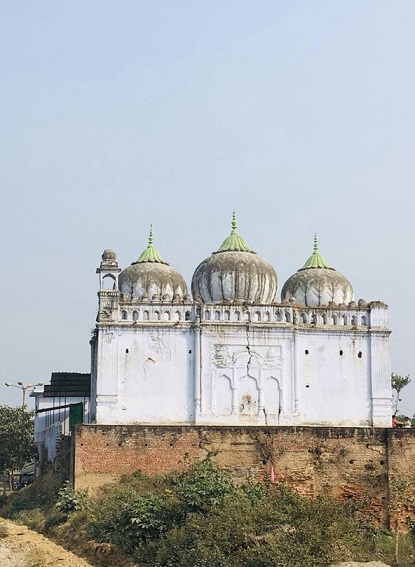
Away from the urban monuments of Lucknow, this veiled heritage of small unknown village came under the protection of ASI in 1917. The book “WAILING BEAUTY: The Perishing Art of Nawabi Lucknow by Saiyed Anwer Abbas, 2002” added a succinct description of these monuments: “The pul was built by Raja Tikait Raion River Behta, along with a small shiv Mandir on the river side. The masjid is located half a kilometer earlier to the mandir (from village side)”.
In midst of dubious role presented by the court historians that lead his dismissal, the tenure of ambitious Kayasth minister left his marks on monumental history of Awadh.
A deadly drought appeared during 1785 in Awadh for which Nawab Asaf Ud Daula started food for work programme & famous popular proverb that is still cited in today’s Lucknow, “Jis Na de Maula Usko de Asaf Ud Daula”. “In response to drought, the megaprojects were started by Asaf Ud Daula, Hasan Raza Khan & Tikait Rai, with intent to absorb the influx of laborers thrown off the land and of avoiding urban food riots. In 1785 several large works began, including a market, Tikaitganj; a huge gate, the Rumi Darvazah; and the Great Imambarah, Roots of North Indian Shi’ism in Iran and Iraq: Religion and State in Awadh, 1722–1859 by J. R. I. COLE (1989, UOC)”.
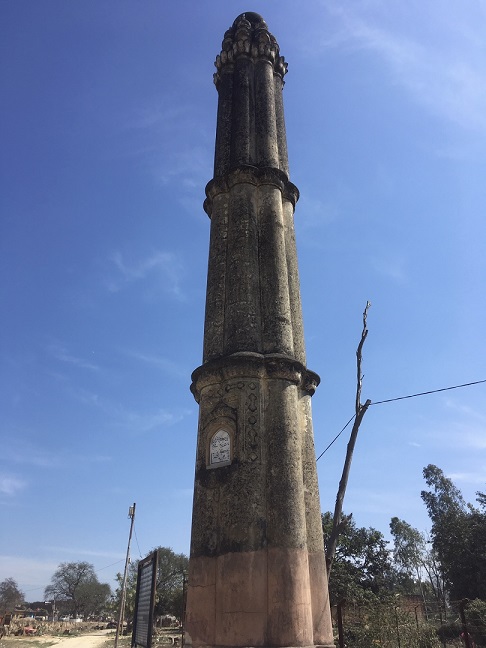
Tikait Rai Ka Talab in Lucknow was once a public water body builds by him in good spirit for quenching the thirst of the travellers. Maharaja Tikait Rai founded many village settlements, built bridges, Sarai & temples all across the Awadh. The district Gazette of neighboring Barabanki wrote “Maharaja Tikait Rai, the minister of Asaf Ud Daula & a man of great spirit, founded Tikait Nagar (in Pargana Daryabad) and a Bazar name Tikait Ganj in (Pargana Kursi).
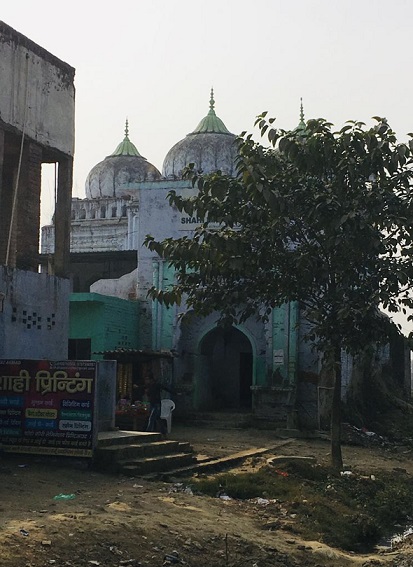
In addition to the monumental work, the historical accounts showed that Raja Tikait Rai also promoted literary activities. He enriched both Persian & Brajbasha, by patronizing the scholars & Rekhta poets. Tikaitray-prakasha (1792) was one such poetic account written by a Braj scholar that was dedicated to his name.
Little has been documented regarding Tikait Rai after his dismissal from the court. However the book, “Oudh & East India company, 1785-1801, by Purnendu Basu (1943) sketched few mentions of his mentor, Hasan Raza Khan. He was offered a pension of twenty five thousand Rupees/month on the recommendations of British resident. He refused to take it as mark of indignity. Retired from public life & died in poverty (1801). The District Gazette of Lucknow & Barabanki (HR Nevill, 1904), documented detailed background of all Kayasth Zamindars & none of them had any ancestral connection with Raja Tikait Rai who once assumed such a great power & wealth in state of Awadh. It appears that Raja Tikait Rai might also face similar financial distress like Hasan Raza Khan & passed away in 1808.
